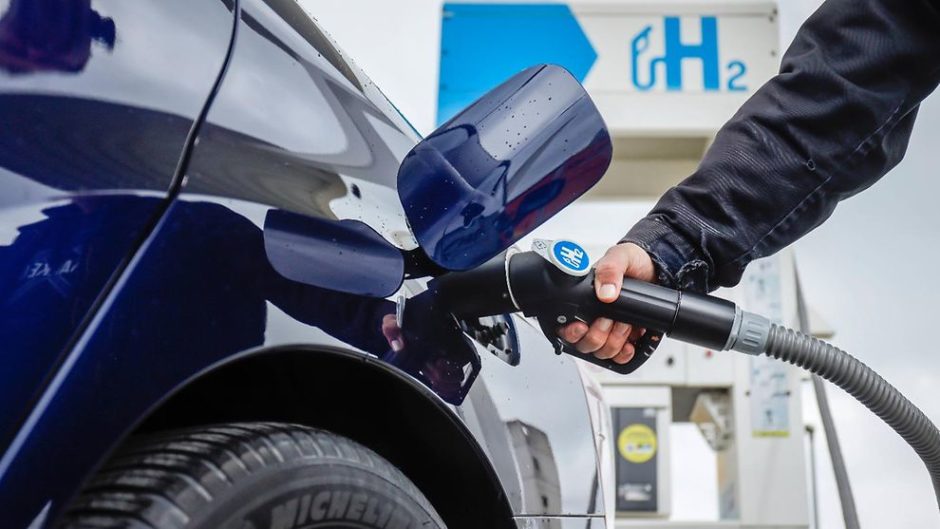
Berlin’s €9 billion support package for hydrogen has given the power-to-gas industry an injection of impetus it sorely needs in order to get projects off the ground.
The German government’s €9bn hydrogen strategy, announced on 10 June, was a much-needed psychological boost for promoters of power-to-gas technologies across Europe. The plan prioritises ‘green hydrogen’ which is electricity produced by renewables such as wind or solar and converted into storable ‘green’ gas by using electrolysers.
The German plan sets a target of 5 GW of electrolyser capacity by 2030, which amounts to 14 TWh of hydrogen production annually. That would require 20 TWh/year of additional renewables generation on top of the 237 TWh/year of renewable electricity Germany already produces. Another 5 GW of electrolyser capacity is planned for 2035-40. €7bn of the investment package will go to support domestic projects while €2bn will go to projects abroad, most likely to solar projects in North Africa.
Seen in isolation, the targets are relatively modest. Fourteen TWh of hydrogen would account for little more than 1% of Germany’s current gas consumption. Even a doubling of production by 2035 – at the earliest – is far from a radical approach.
However, political support should boost investor confidence and help projects through the embryonic stage before technology costs eventually begin to fall, as has been the case with Germany’s wind and solar boom.
“The government’s hydrogen strategy is a good starting point. It makes sense not to be over-ambitious – the whole renewables initiative also started modestly before it took off in the early 2000s,” Matthias Lang, a Dusseldorf-based partner and energy expert with law firm Bird & Bird told Energy Voice.
Renewables now represents a significant share of Germany’s electricity mix. On windy and sunny days, the country produces more electricity than grids and consumers can absorb.
“A lot of the renewables capacity is already there. Renewables accounted for around 56% of electricity generation in the first five months of 2020. Hydrogen seems to deal with the issue of excess generation. Moreover, Germany likes an engineering challenge. Look at the Ruhr area – there are hydrogen projects everywhere,” said Lang.
The hydrogen industry has also reacted positively to the German government’s hydrogen plan.
“Seven billion euros for market upscaling of German hydrogen projects is a sizable amount. Together with €2bn for international projects it is a strong signal of intent,” Constantine Levoyannis, Head of Policy at the Brussels-based industry group Hydrogen Europe told the Energy Voice.
EU strategy
The European Commission’s proposal for a hydrogen strategy is expected to be released on 8 July. A leaked draft suggests Brussels will propose a European target of 40 GW of electrolyser capacity by 2030. This would equal 173 TWh of renewable hydrogen production by that year.
Germany takes over the 6-month rotating Presidency of the EU on 1 July, and the industry is hopeful that Berlin will use its clout to get other EU member states onboard for an ambitious hydrogen strategy.
“We expect the hydrogen momentum to keep pace under the German Presidency of the EU Council which starts next month. The European Commission’s hydrogen strategy will feature high on the Presidency’s agenda,” said Levoyannis.
Expensive technologies
Hydrogen faces two challenges in particular; high costs and technological barriers. A study released this week by the German Institute for International and Security Affairs noted that green hydrogen was 360% more expensive to produce than conventional ‘grey’ hydrogen which is broadly used across Germany’s industrial sector. Around 35 of power-to-gas demonstration projects are operating in Germany today, but their combined capacity is only around 30 MW, the study noted.
“Hydrogen is costly, but Germany spends around €25-30 billion on renewables a year anyway through the EEG surcharge and grid tariffs. At least some of this money could go to hydrogen projects,” said Lang.
Initially, green hydrogen will be deployed locally for industrial purposes and heavy duty transport. Over time, it can be transported across borders, but that will require extensive upgrading of existing gas pipelines .
“When it comes to the conversion of existing natural gas pipelines for hydrogen transportation, older gas pipelines will require more upgrades than newer pipelines e.g. coating inside the pipeline,” said Levoyannis.
“Retrofitting of valves, compressor stations and blades also need to be taken into consideration. Either way, it makes both social and economic sense to use the gas infrastructure which is already there,” he added.
The European hydrogen industry also wants to quickly establish a market for cross-border and global trading of hydrogen, with prices indexed to the Euro and not USD.
“Europe has the lead on electrolyser technologies. But things are moving fast also in other geographies, notably China, South Korea, Japan and the US so we need to move quickly to stay in the driving seat,” said Levoyannis.
Recommended for you
